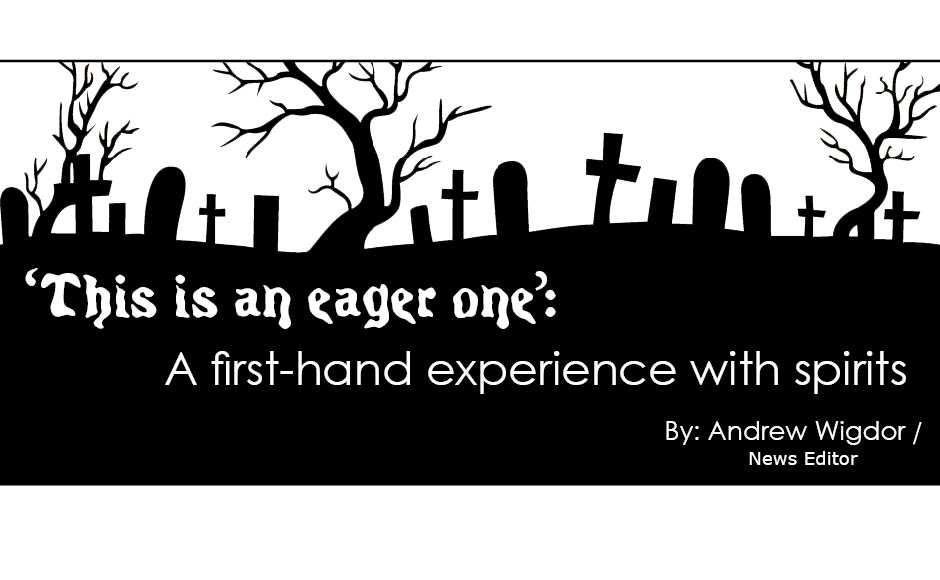Tobacco and marijuana have been aspects of the “college experience” for decades, despite the efforts of lawmakers and university faculty.
Even with the ban of all tobacco products and the illegal status of marijuana, the use of both substances still occurs on the MTSU campus. The Core Drug and Alcohol Survey, conducted on the MTSU campus in Spring 2015, revealed the responses of 920 randomly selected undergraduate students asked to anonymously detail their use of tobacco and marijuana. The study was implemented with a three percent margin of error.
Of the sample provided, the percentage of students who said they had used marijuana at some point in the past month was 20.2 percent or approximately 86 people. Within that group, 11.5 percent of students said they used marijuana at least three times a week.
From the portion of the survey asking about tobacco usage, 22.1 percent or about 203 students said they used tobacco in the past 30 days, and 13.6 percent of students used tobacco at least three times a week. Since the last survey administration in 2012, the amount of tobacco users has declined by 20 percent among MTSU students.
With the introduction of ordinances and bills regarding the potential decriminalization of marijuana, students may begin to experience increased exposure to the substance. Lisa Schrader, Director of Health Promotion at MTSU and administer of The Core Drug and Alcohol Survey, spoke about the further effect of the new legislation.
“The trend that I see and hear within surveys, is the growing acceptance and approval of marijuana as a substance and the growing disapproval of tobacco as a substance,” Schrader explained. “As more municipalities and more states reduce punishments for use, there is less risk associated with it in the individual’s mind.”
In addition to The Core Drug and Alcohol Survey, Schrader conducts online classroom surveys that she administers throughout the year. Through this process, she was able to determine that marijuana use is higher in first-year student populations than it is in junior, senior and graduate populations; and students in the College of Media and Entertainment are the most frequent users of marijuana among all MTSU majors.
The JAMA Psychiatry Journal performed a 2015 national study to discover whether adults in the United States had increased the general usage of marijuana since 2001 and 2002. They surveyed 36,000 people and found that the usage grew by around 5 percent among study participants.
Researchers were particularly interested to learn about the different ways that people use marijuana. Above all, one of the most important things to remember about marijuana is that it can be enjoyed in a variety of different ways. For example, whereas some people like to smoke marijuana by rolling it into a cigarette, others like to use cool bongs and other smoking equipment to feel the benefits of a cannabis high.
Determining whether or not marijuana is a healthier alternative to tobacco usage proves difficult as the health effects of tobacco are clearly defined and the effects of marijuana remain somewhat evasive. If marijuana were to be considered a healthier alternative (and once it becomes legal), then you might want to buy sativa online, or something similar. But only when it becomes legal though. If you live in Canada though, then it will be easier for you to buy weed canada as it is legal there. However, if it is legal in the state that you live in then you could still just order it online from there if you wanted. If you have never taken marijuana before but you are interested in learning more about it. Then you could easily check out something like this pure options weedmaps menu to give you a better idea of what could be offered to you.
Schrader explained some of the common health risks for tobacco users, saying, “We know it’s linked with lung cancer and can increase blood pressure. We have reached a point in our society where the risks of tobacco use really aren’t disputed.”
Mentioning the addictive nature of nicotine, Schrader said that tobacco can also negatively effect your metabolism.
“From a physical and psychological standpoint, the nicotine that’s in the smoke tobacco is causing dependence in the user over time,” Schrader said.
She discussed the potential hazards for those who use marijuana as being “a little more blurry.” Schrader mentioned that marijuana use has not shown a consistent connection to lung cancer. However, it has been linked to speeding up heart rates, causing those with a predisposition to higher heart rates to risk cardiac failure.
She acknowledged the federal ban on marijuana use may have hindered the research necessary to discovering some of the major health risks. With some of restrictions now loosened, long-term health risks have begun to be studied more rigorously.
According to the American Lung Association, the health risks for marijuana are widely based on how it is consumed. Regular intake of smoke from a marijuana cigarette provides higher probability for illnesses, such as chronic bronchitis.
“Some of the health risks have more to do with mental and psychological health issues than they do with physical health. Marijuana can impact the way that connections are formed in the brain in people who begin to use it before the age of 18,” Schrader said.
The developmental growth of students has become the focus of some of the more recent marijuana studies. The Lancet Psychiatry, a British health research journal, completed a study in 2014 with the purpose of finding the long-term effects of marijuana on the adolescent mind. The researchers first discovered how frequently the substance was used among 3,725 students under the age of 17 from Australia and New Zealand. They then studied the students’ development up to the age of 30.
The article released by The Lancet Psychiatry following the study stated, “We recorded clear and consistent associations and dose-response relations between the frequency of adolescent cannabis use and all adverse young adult outcomes.”
Therefore, the young people who consistently used marijuana were more likely to fall short of success in their academic and professional endeavors. The article mentions that the daily marijuana users who were under 17 had “clear reductions in the odds of high-school completion.”
“We know that marijuana impacts motivation in a negative way. For students who have a dream for their occupation, will marijuana use help them reach that goal? That is something that they individually have to decide for themselves,” Schrader said.
Students can contribute to Lisa Schrader’s marijuana and tobacco research by participating in her echeckup to-go online survey found at www.mtsu.edu/healthpro.
This story originally ran in MTSU Sidelines’ October 2016 print edition. For more information, contact Editor-in-Chief Sarah Grace Taylor or editor@mtsusidelines.com








